tanlu
Shohin
I haven't posted in years, given all of my interesting material has been and still is in the ground in upstate NY at my parents' house. I moved this spring to northern VA and I decided, for a number of reasons, to take 2 trees with me. I potted them in bonsai soil and wood chips in terracotta pots. One of them is this young JRP. I collected it as a small seedling and have been giving it the good 'ol clip and grow treatment for both the foliage and roots over the past 13 years, so the trees had a compact root system by the time they were potted. I planned to make this a bunjin style tree but the branches and trunk have gotten thicker than I wouldn've liked and lack movement. However, the bark is starting to get interesting and I'm hoping some guy wires can allow me to lower some branches and the apex, whatever that ends up being.
My questions are:
All opinions are welcome, but those with considerable knowledge and experience with pines would be most helpful!
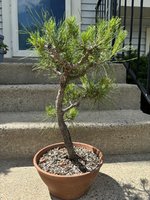
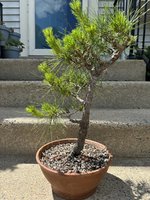
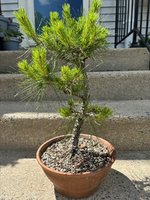
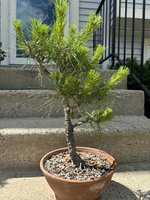
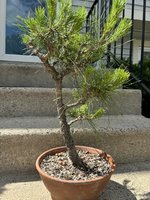
My questions are:
- Which branch should become the apex?
- Should it be the current apex or would the tree be better suited to a more compact
- Which branches should I keep or remove?
- What would be a good planting angle?
- Where is the front of the tree?
All opinions are welcome, but those with considerable knowledge and experience with pines would be most helpful!












